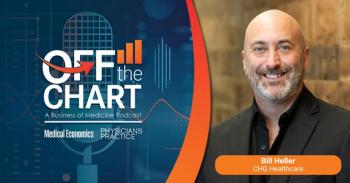
Appreciating burden of proof and what remains in the SolarWinds case
What health care can learn from recent DOJ actions.
Importantly, for public companies, the key is not what the judge dismissed from the case, but what the judge allowed to survive.
On July 18, 2024, the Judge presiding over Securities and Exchange Commission v. Solarwinds Corp. & Timothy G. Brown, Case No. 23-cv-9518 (S.D.N.Y.) (hereinafter “Solarwinds”) issued an Opinion and Order on Defendants’ Motion to Dismiss, which involve familiar securities statutory and regulatory grounds. In Solarwinds, the SEC alleged that the company and its vice president in charge of its information security were responsible for two categories of deficient disclosures related to the December 2020 large-scale cyberattack (SUNBURST). The first category, which the Court termed “pre-SUNBURST” is concerned with disclosures to the market about its cybersecurity compliance before the cyberattack. The second category, “post-SUNBURST” is specific to disclosures to the market after the attack. In its Order, the Court dismissed the post-SUNBURST causes of action.
“As to the pre-SUNBURST disclosures, the Court sustains the SEC’s claims of securities fraud based on the company’s Security Statement. That statement is viably pled as materially false and misleading in numerous respects.” Solarwinds, p. 3. SolarWinds customers included 499 companies within the Fortune 500, which includes notable companies such as UnitedHealth Group, HCA Healthcare, and McKesson. And, as the Court articulated,
In late 2017, without fixing its known cybersecurity problems, SolarWinds decided to post a “Security Statement” on the “Trust Center” section of its website. Brown was primarily responsible for creating and approving the Security Statement. … The Security Statement aimed to provide SolarWinds’ customers with ‘more information about [its] security infrastructure and practices.’ Solarwinds, p. 6 (emphasis added).
This aspect of Solarwinds is material not only to public companies, but it translates to the health care sector in general and to privacy and security obligations under the
So, what is next in Solarwinds now that the Fed. R. Civ. P. 12(b)(6) motion was addressed by the Court? Knowing that the pre-SUNBURST claims survived and will move forward, the SEC and the defendants will continue motion practice and move forward with trial. The burden of proof which must be met various with different convictions and judgements. Since this is not a criminal case, the “beyond a reasonable doubt” standard, which is the highest level of evidentiary standard, does not apply. The middle level of proof is “clear and convincing evidence”, which is a more rigorous standard than the “preponderance of the evidence” standard. In Solarwinds, the evidentiary standard that the court will apply is the “preponderance of the evidence” which essentially requires the SEC to prove a proposition by demonstrating that the proposition is more likely true than not true.
In sum, this is one to watch but not in a vacuum, as the Federal Trade Commission, DOJ, and HHS have other tools at their disposal which have been successfully deployed.
Newsletter
Optimize your practice with the Physicians Practice newsletter, offering management pearls, leadership tips, and business strategies tailored for practice administrators and physicians of any specialty.








